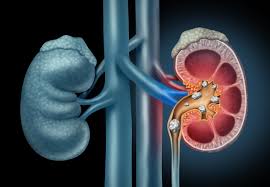AP Human Geography: In this course, you’ll explore how humans interact with and shape the surface of our planet. Using the tools and methods of geographers, you’ll delve into patterns of human population, migration, land use, and cultural diffusion. Let’s dive into the details:
Course Overview
AP Human Geography is an introductory college-level course that examines the dynamic relationship between humans and their environment. From population density to cultural spread, you’ll analyze geographic concepts and processes that define our world.
Skills Development
In AP Human Geography, you’ll develop essential skills, including:
- Real-Life Application: Connecting geographic concepts to everyday scenarios.
- Visual Literacy: Understanding maps, charts, graphs, and images.
- Pattern Recognition: Identifying trends and drawing conclusions from data.
- Spatial Understanding: Grasping relationships across different scales.
Equivalency and Prerequisites
- College Course Equivalent: Comparable to an introductory college-level course in human geography.
- Recommended Prerequisites: None—this course welcomes all curious minds interested in understanding our planet’s human dimensions.
Exam Information
- Exam Date: Tuesday, May 7, 2024, at 8 AM Local Time.
- This is the scheduled date for the AP Human Geography Exam.
Course Units
The AP Human Geography curriculum is organized into seven units:
Unit 1: Thinking Geographically
- Focus: Tools and methods geographers use to study places.
- Exam Weight: 8%–10%.
Unit 2: Population and Migration Patterns and Processes
- Focus: Patterns associated with human populations, theories of growth and decline, immigration policies, and causes/effects of migration.
- Exam Weight: 12%–17%.
Unit 3: Cultural Patterns and Processes
- Focus: Language, religion, and cultural practices—how they spread over space and time.
- Exam Weight: 12%–17%.
Unit 4: Political Patterns and Processes
- Focus: Political organization of the world, types of political entities, government forms, and factors leading to state fragmentation.
- Exam Weight: 12%–17%.
Unit 5: Agriculture and Rural Land-Use Patterns and Processes
- Focus: Origins of agriculture, farming practices, environmental impact, and the Green Revolution.
- Exam Weight: 12%–17%.
Unit 6: Cities and Urban Land-Use Patterns and Processes
- Focus: Urbanization, city growth, globalization, infrastructure, and design.
- Exam Weight: 12%–17%.
Unit 7: Industrial and Economic Development Patterns and Processes
- Focus: Industrialization, economic sectors, gender roles, trade, and global economy.
- Exam Weight: 12%–17%.
Preparing for Exploration
To thrive in AP Human Geography, observe the world around you, think spatially, and appreciate the interconnectedness of human actions. Bon voyage!
What are some study tips for AP Human Geography?
Studying for AP Human Geography can be challenging, but with effective strategies, you can succeed. Here are some study tips to help you prepare:
Understand the Exam Structure:
- Familiarize yourself with the exam format. The AP Human Geography exam consists of two sections: multiple-choice and free-response. Allocate your study time accordingly.
Use Review Books:
- While class notes and textbooks are essential, supplement your learning with an AP Human Geography review book (e.g., Barron’s). These books provide additional practice questions and strategic breakdowns.
Take Full Practice Tests:
- Start by taking a full-length practice test under timed conditions. Evaluate your performance and identify areas of weakness. Aim for around 45 seconds per multiple-choice question.
Memorize Terminology:
- AP Human Geography involves specific terminology. Focus on understanding key concepts and vocabulary related to population, migration, land use, and cultural patterns.
Know Your Regions:
- For free-response questions, provide specific examples to support your answers. Understand regional differences and be prepared to cite relevant case studies.
Pay Attention to Models and Theories:
- Understand important models and theories (e.g., Rostow’s stages of economic growth, Von Thünen’s agricultural model). These frameworks help explain geographic phenomena.
Practice Visual Literacy:
- Interpret maps, charts, graphs, and images. Pay attention to spatial relationships and patterns. Use visual sources to draw conclusions.
Review Content Areas:
- Identify content areas where you struggled during practice tests. Focus on studying those topics in-depth.
Create a Customized Study Plan:
- Allocate time for each step: diagnostic test, content review, and additional practice tests. Aim for approximately eight hours of focused study.
Remember, consistent practice, understanding terminology, and mastering key concepts will help you succeed in AP Human Geography. Good luck!
What are some common mistakes to avoid in AP Human Geography?
Here are some common mistakes to avoid in AP Human Geography:
Ignoring Spatial Thinking:
- Geography is all about space and place. Don’t overlook spatial relationships, patterns, and scales. Always consider the “where” alongside the “what.”
Neglecting Visual Literacy:
- Maps, graphs, and images are crucial. Practice interpreting visual sources. Understand legends, scales, and symbols.
Memorizing Facts Without Context:
- Understand the “why” behind geographic phenomena. Don’t just memorize population numbers; analyze population density, migration patterns, and their implications.
Overlooking Cultural Diffusion:
- Cultural practices spread across space. Consider how language, religion, and customs diffuse and impact regions.
Not Connecting Themes Across Units:
- Recognize interconnections. For example, how political boundaries affect cultural diffusion or how economic development impacts land use.
Ignoring Case Studies:
- Use specific examples to support your arguments. Mention real-world situations and case studies in essays.
Weak Essay Structure:
- In free-response questions, provide a clear thesis, evidence, and analysis. Avoid vague or unsupported statements.
Skipping Practice Tests:
- Regularly take practice exams. Understand question formats and time management. Review your mistakes.
Underestimating Urban Geography:
- Urbanization is a significant topic. Understand city growth, infrastructure, and globalization’s impact on cities.
Not Reviewing Geographic Models:
- Models like Von Thünen’s agricultural model or Rostow’s stages of economic growth are essential. Understand their applications.
Remember, active engagement, spatial thinking, and holistic understanding are key to success in AP Human Geography.










